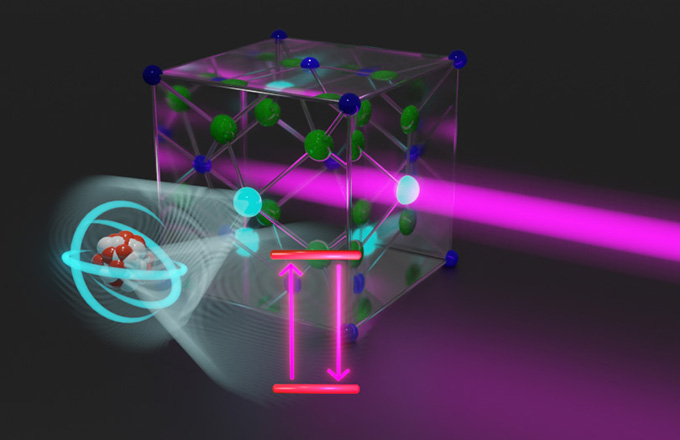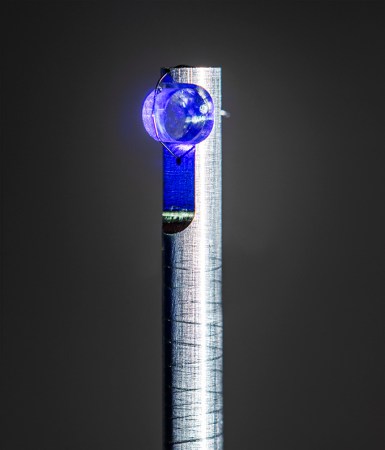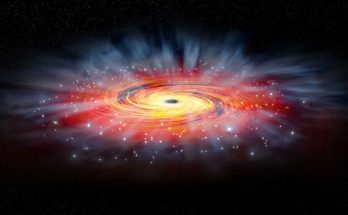The time is nigh for nuclear clocks.
In a first, scientists have used a tabletop laser to bump an atomic nucleus into a higher energy state. It’s a feat that sets scientists on a path toward creating the first nuclear clock, which would keep time based on the inner workings of atomic nuclei.
The advance is a “remarkable breakthrough,” says Olga Kocharovskaya, a physicist at Texas A&M University in College Station who was not involved in the research.
Compared to atomic clocks — currently scientists’ most precise timekeepers — nuclear clocks could be simpler and more portable. And they could be used to test fundamental physics theories in new ways. With the new result, a nuclear clock seems more attainable than ever: “We know now that it’s conceptually feasible,” says physicist Peter Thirolf of Ludwig-Maximilians-Universität München in Germany, who was not part of the study.
Tried-and-true atomic clocks are based on the physics of the electrons that surround atoms. Within those atoms, electrons inhabit individual energy levels. To coax an electron to jump to a particular higher energy level, it needs to be provided with just the right amount of energy from a laser. That energy corresponds to a specific frequency of the laser’s light. To home in on that frequency, scientists aim a laser at a collection of atoms and scan the laser’s frequency until the electrons make the jump (SN: 10/5/17). That frequency is then used, like an atomic metronome, to keep time.
Nuclear clocks would use the transitions of atomic nuclei, rather than electrons, to mark time. While most atomic nuclei have energy levels too far apart for a laser to kick off the jump, one special nucleus is an outlier. A variety of the element thorium, thorium-229, has an unusually small energy jump, accessible to lasers.
Until recently, scientists didn’t know the size of that jump very well. In 2023, however, scientists measured it to higher precision than ever before (SN: 6/1/23).
That allowed physicists to take the next step. Researchers used a laser to bump thorium-229 nuclei to a higher energy level, and observed the light emitted in the jump back down. The experiment further pinned down the energy of the transition: It’s 8.35574 electron volts, the team reports in a paper accepted to Physical Review Letters. That number is consistent with the 2023 measurement, but is about 800 times as precise. To make a nuclear clock, scientists will need to increase the precision of this measurement even further.

When the researchers saw the signal, “we were very excited, of course,” says physicist Ekkehard Peik of the National Metrology Institute of Germany in Braunschweig. “It was a long search.” Peik first proposed the idea of making nuclear clocks with thorium-229 in a 2003 paper he coauthored.
In the experiment, the thorium-229 was embedded in a crystal of calcium fluoride. This differs from atomic clocks, in which atoms are contained in a vacuum chamber. The possibility of making future nuclear clocks out of solid materials is part of their appeal: “Potentially you could imagine building a much simpler, portable system, taking this clock out of the lab,” says physicist Jun Ye of JILA in Boulder, Colo., who was not involved with the new research.

And because nuclear clocks are based on different physics than atomic clocks, comparing the two types of timepieces could allow for new studies of fundamental physics (SN: 6/4/21). For example, scientists could search for variations in the fundamental constants of nature, a set of numbers governing the cosmos that are normally assumed to be immutable (SN: 11/2/16). Nuclear clocks could also allow new searches for dark matter, unidentified massive particles that pervade the universe.
There’s still much more work to be done to build a nuclear clock. And even once scientists have built them, Ye says, “it will take years, if not decades, of work to catch up with atomic clocks.” But “just being able to see the transition opens the door.”
#Physicists #major #step #making #nuclear #clock
Image Source : www.sciencenews.org



